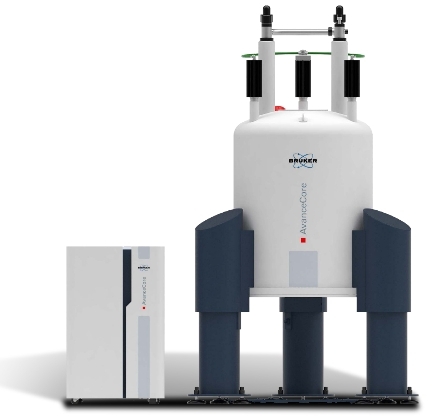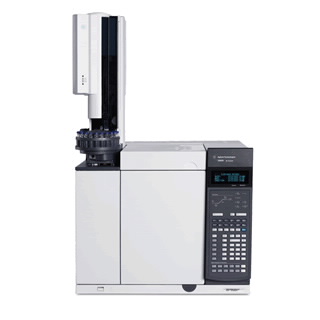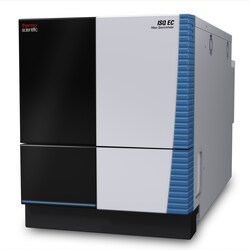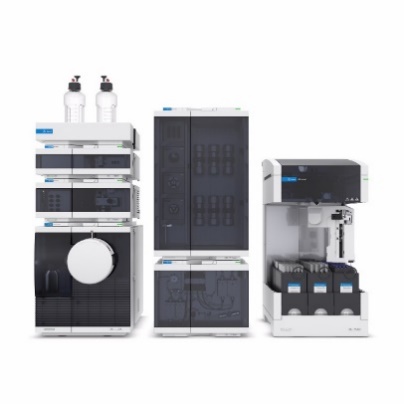What are cafestol?
Caffeol (C20H30O) is a naturally occurring diterpene found in coffee, mainly in the oily part of the coffee bean. Caffeol has a dual biological effect: it regulates cholesterol metabolism and has antioxidant and anti-inflammatory properties. As one of the most biologically active components of coffee, Caffeol quantification and structural analysis are critical for:
Coffee Production and Quality Control
Coffee manufacturers can utilize Cafestol analysis to optimize product formulation, ensuring consistency in flavor and bioactive compound content.
Nutritional Research
Researchers studying the effects of coffee on health can use Cafestol analysis to investigate its potential role in cholesterol regulation, metabolic diseases, and other health-related topics.
Food Chemistry
Cafestol's chemical properties and its interactions with other compounds in coffee make it an essential target for studies related to food chemistry and consumer products.
Creative Proteomics's cafestol analysis service combines technological rigor with industry-specific expertise, offering actionable insights for researchers and businesses alike.
Cafestol Analysis Service by Creative Proteomics
Creative Proteomics provides a wide range of specialized services for cafestol analysis to ensure high-precision data back your research and development processes. Our service offerings include:
Cafestol ldentification and Quantification
- Targeted GC-MS or LC-MS/Ms analysis for accurate quantification of cafestol.
- Absolute and relative quantification with internal standards.
- Precise measurement of cafestol in raw coffee beans, roasted products, brewed beverages, and biological samples.
Structural Characterization
- High-resolution MS and MS/MS analysis for cafestol structural elucidation.
- Fragmentation pattern analysis to determine molecular structure and confirm identity.
Targeted Metabolite Analysis
- Identify and quantify Cafestol's metabolites to gain insight into its bioactive transformation in the human body.
- Detection of cafestol-derived metabolites (e.g., 16-O-methylcafestol, kahweol) in metabolic pathways.
Isotope Tracing Studies
- Quantifying metabolic rates by labelling cafestol and other cafestol metabolites reveals dynamic metabolic processes.
- Combined with mass spectrometry to track the binding of isotopically labelled compounds in metabolic pathways to determine metabolic rates and pathway activity.
Data Interpretation and Report Generation
- Detailed, scientifically rigorous reports, including all relevant data, trends and analyses.
List of Cafestol -Related Metabolites (including but not limited to)
The following table outlines key analytes and pathways covered in our service:
| Detected Substance |
Metabolite/Pathway Association |
Detection Range(ppm) |
| Cafestol |
Cholesterol modulation, antioxidantactivity |
0.05-500 |
| 16-O-Methylcafestol |
Roasting process biomarker |
0.1–300 |
| Kahweol |
Synergistic interaction with cafestol |
0.05–450 |
| Cafestol palmitate |
Esterified form in coffee oil |
0.2–600 |
| CYP450-mediated metabolites |
Detoxification pathway markers |
0.01–200 |
Techniques and Instrumentation for Cafestol Analysis
 Bruker 400 MHz NMR spectrometer (Figure from Bruker)
Bruker 400 MHz NMR spectrometer (Figure from Bruker)
 7890B Gas Chromatograph (Figure from Agilent)
7890B Gas Chromatograph (Figure from Agilent)
 ISQ™ EC Single Quadrupole MS (Figure from Thermo Scientific)
ISQ™ EC Single Quadrupole MS (Figure from Thermo Scientific)
 Mass-Based 1290 Infinity II Preparative LC/MSD System (Figure from Agilent)
Mass-Based 1290 Infinity II Preparative LC/MSD System (Figure from Agilent)
Workflow for Cafestol Analysis Service

Why Choose Us?
- High Precision: We employ state-of-the-art analytical instrumentation, such as LC-MS/MS and GC-MS, to deliver highly accurate quantifications of cafestol and its metabolites with excellent sensitivity and specificity.
- Ultra-Sensitive Detection: Achieve limits of detection (LOD) as low as 0.01 ppm for trace-level analysis.
- High Throughput: Process 200+ samples/day with automated workflows.
- Multi-Matrix Compatibility: Validate methods for coffee beans, oils, blood serum, and plant tissues.
- Speed and Efficiency: Our advanced systems allow for fast processing times, enabling rapid turnaround without compromising quality.
Applications of Cafestol Analysis
|

|
Coffee Production and Quality Control
Coffee manufacturers can utilize Cafestol analysis to optimize product formulation.
|

|
Agricultural Research
Optimize coffee plant breeding for cafestol yield.
|
|

|
Nutraceutical Nutritional Research
Researchers studying the effects of coffee on health can use Cafestol analysis to investigate its potential role in cholesterol regulation, metabolic diseases, and other health-related topics.
|

|
Food Chemistry
Cafestol's chemical properties and its interactions with other compounds in coffee make it an essential target for studies related to food chemistry and consumer products.
|
Sample Requirements for Cafestol Analysis Assay
Submit samples according to the guidelines below:
| Sample Types |
Minimum Quantity |
Storage Conditions |
| Coffee beans (ground) |
50.g |
-20°C, airtight container |
| Brewed coffee liquid |
20 mL |
4°C, preservative-free |
| Blood serum/plasma |
1 mL |
-80°C, avoid freeze-thaw |
| Plant tissue |
10 g |
Lyophilized, desiccated |
- Q: How should I prepare coffee samples to avoid degradation?
- A: Freeze-dry liquid brews or store ground beans at -20°C. Avoid UV exposure.
- Q: What turnaround time can I expect?
- A: Standard reports are delivered in 4–6 weeks.
- Q: Can you differentiate between cafestol isomers?
- A: Yes, our LC-MS/MS method resolves structural analogs (e.g., cafestol vs. kahweol) with >98% accuracy.
- Q: Is the service compatible with organic coffee extracts?
- A: Absolutely. We validate methods for organic solvents (e.g., hexane, ethanol) up to 95% purity.
- Q: What if my sample volume is below the minimum requirement?
- A: Contact our team for microsampling protocols (≥50% of stated minimum).
- Q: Do you provide data interpretation support?
- A: Yes, our reports include statistical summaries and biological context.
- Q: Can you detect cafestol in non-coffee matrices?
- A: We've validated methods for select medicinal plants (e.g., Euphorbia species).
- Q: What are the method's limitations?
- A: Co-eluting lipids may interfere in unrefined oils; pre-treatment is recommended.
 Mass spectrometry chromatograms showing ion abundance (m/z = 272, 275) for different enzyme combinations: TwCPS1+TwMS1, TwCPS1+TwMS2, TwCPS1+TwMS3, and TwCPS4+TwMS2, including the mutant variant TwCPS1+TwMS3 (R251L). X-axis displays retention time (14.5-16.0 min), with peaks indicating metabolic activity or compound elution profiles. (Figure from Lichan Tu et al., 2022)
Mass spectrometry chromatograms showing ion abundance (m/z = 272, 275) for different enzyme combinations: TwCPS1+TwMS1, TwCPS1+TwMS2, TwCPS1+TwMS3, and TwCPS4+TwMS2, including the mutant variant TwCPS1+TwMS3 (R251L). X-axis displays retention time (14.5-16.0 min), with peaks indicating metabolic activity or compound elution profiles. (Figure from Lichan Tu et al., 2022)
 Mass spectrum displaying relative abundance (%) vs. m/z (100-1000) via LDI, with labeled peaks (1-17) (Figure from EunjiCho et al., 2021)
Mass spectrum displaying relative abundance (%) vs. m/z (100-1000) via LDI, with labeled peaks (1-17) (Figure from EunjiCho et al., 2021)
Cafestol inhibits colon cancer cell proliferation and tumor growth in xenograft mice by activating LKB1/AMPK/ULK1-dependent autophagy
Background:
Cafestol, a natural diterpenoid found in coffee, has antioxidant, cytotoxic and antimutagenic potentials and is currently recognized as an effective ingredient in the treatment of various forms of cancer.
Colorectal cancer (CRC) is a malignant tumor with high mortality and prevalence worldwide, and its poor prognosis is mainly due to the side effects and resistance to chemotherapeutic agents.
This analysis aims at the effect of caffeol on CRC and the specific anti-tumor mechanism to lay the foundation for drug development.
Samples:
- Female Balb/c nude mice tumor tissue
- Six biological replicates
Technical methods procedure:
- Female BALB/c nude mice injected with HCT116 cells as an animal model.
- Total bacteria were extracted from each group of mouse fecal samples for microbiota analysis.
- Metabolites were extracted from cancer tissue samples and identified by precise mass spectrometry (mass tolerance < 0.005 Da) and MS/MS data (mass tolerance < 0.02 Da).
- Observation of sample colon tissue using transmission electron microscopy
- Validation of the anti-colon cancer activity and mechanism of action of cafestol on in vitro cell lines using RT-qPCR and protein immunoblotting.
Results
- Caffeol inhibited colon cancer growth and HCT116 proliferation in vivo and in vitro
- Metabolomics data showed that autophagy and AMPK pathways were involved in the anti-colon cancer effects of cafestol.
- Functional validation studies showed that cafestol increased autophagic vesicles and LC3B-II levels.
- Caffeol exerts its antitumor effects by regulating autophagic death mediated by the LKB1/AMPK/ULK1 pathway.
- Caffeol-induced autophagy protein expression was positively correlated with beneficial intestinal bacteria (Cyanobacteriaceae, Synechococcaceae) and negatively correlated with harmful bacteria

Reference
- Yuemei Feng, JiZhuo Yang, Yihan Wang. et al. Cafestol inhibits colon cancer cell proliferation and tumor growth in xenograft mice by activating LKB1/AMPK/ULK1-dependent autophagy. The Journal of Nutritional Biochemistry, 129, 109623 (2024). https://doi.org/10.1016/j.jnutbio.2024.109623



 Bruker 400 MHz NMR spectrometer (Figure from Bruker)
Bruker 400 MHz NMR spectrometer (Figure from Bruker) 7890B Gas Chromatograph (Figure from Agilent)
7890B Gas Chromatograph (Figure from Agilent) ISQ™ EC Single Quadrupole MS (Figure from Thermo Scientific)
ISQ™ EC Single Quadrupole MS (Figure from Thermo Scientific) Mass-Based 1290 Infinity II Preparative LC/MSD System (Figure from Agilent)
Mass-Based 1290 Infinity II Preparative LC/MSD System (Figure from Agilent)



 Mass spectrometry chromatograms showing ion abundance (m/z = 272, 275) for different enzyme combinations: TwCPS1+TwMS1, TwCPS1+TwMS2, TwCPS1+TwMS3, and TwCPS4+TwMS2, including the mutant variant TwCPS1+TwMS3 (R251L). X-axis displays retention time (14.5-16.0 min), with peaks indicating metabolic activity or compound elution profiles. (Figure from Lichan Tu et al., 2022)
Mass spectrometry chromatograms showing ion abundance (m/z = 272, 275) for different enzyme combinations: TwCPS1+TwMS1, TwCPS1+TwMS2, TwCPS1+TwMS3, and TwCPS4+TwMS2, including the mutant variant TwCPS1+TwMS3 (R251L). X-axis displays retention time (14.5-16.0 min), with peaks indicating metabolic activity or compound elution profiles. (Figure from Lichan Tu et al., 2022) Mass spectrum displaying relative abundance (%) vs. m/z (100-1000) via LDI, with labeled peaks (1-17) (Figure from EunjiCho et al., 2021)
Mass spectrum displaying relative abundance (%) vs. m/z (100-1000) via LDI, with labeled peaks (1-17) (Figure from EunjiCho et al., 2021)


